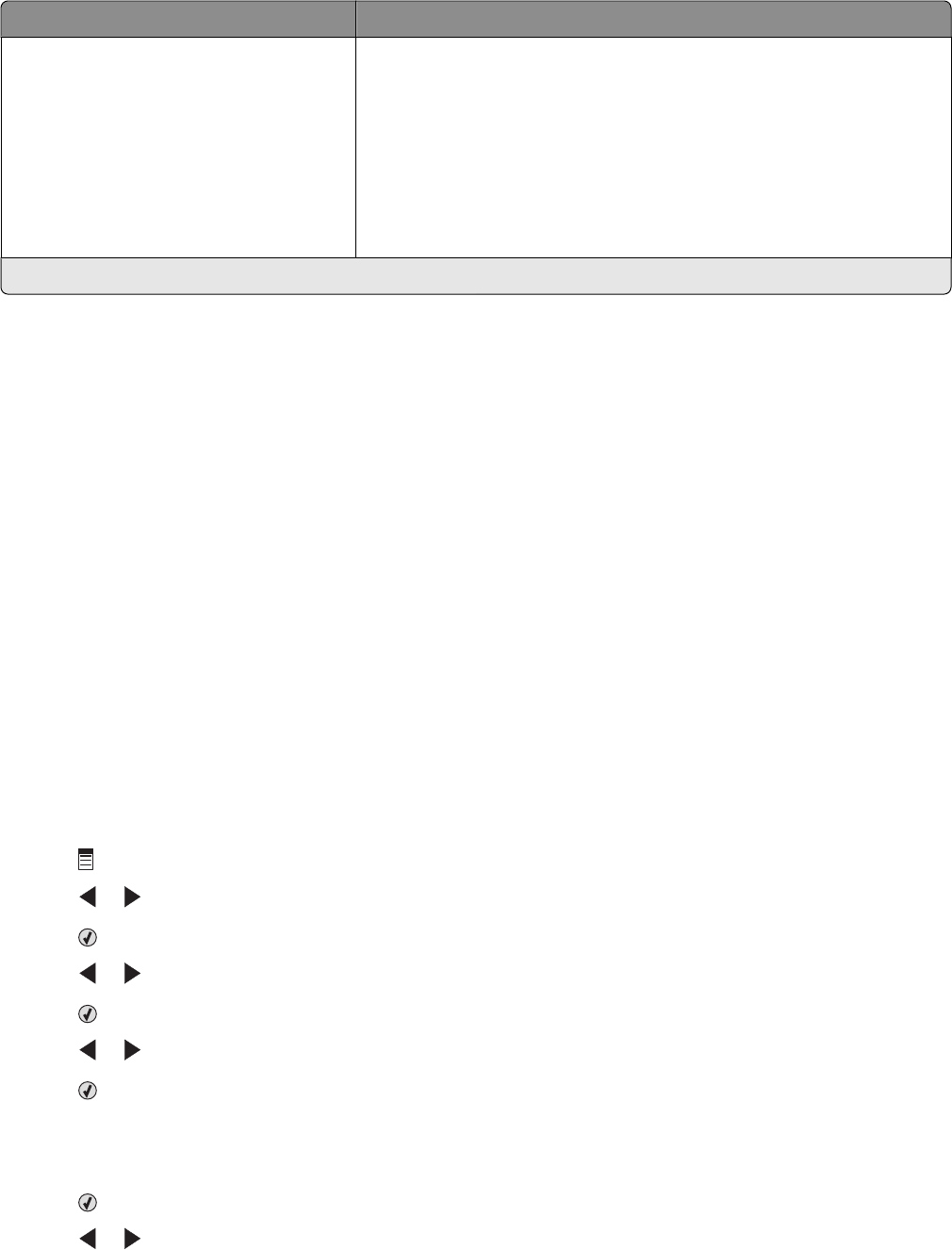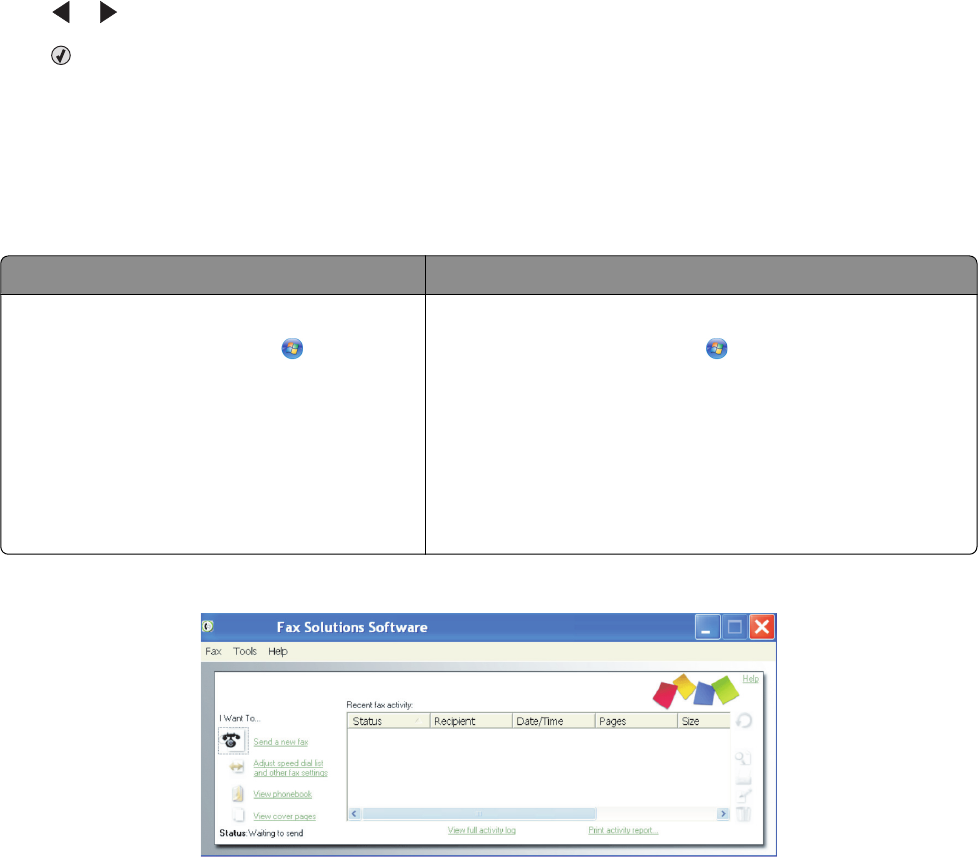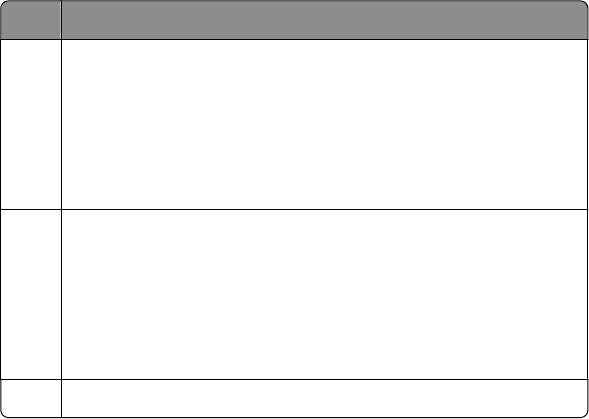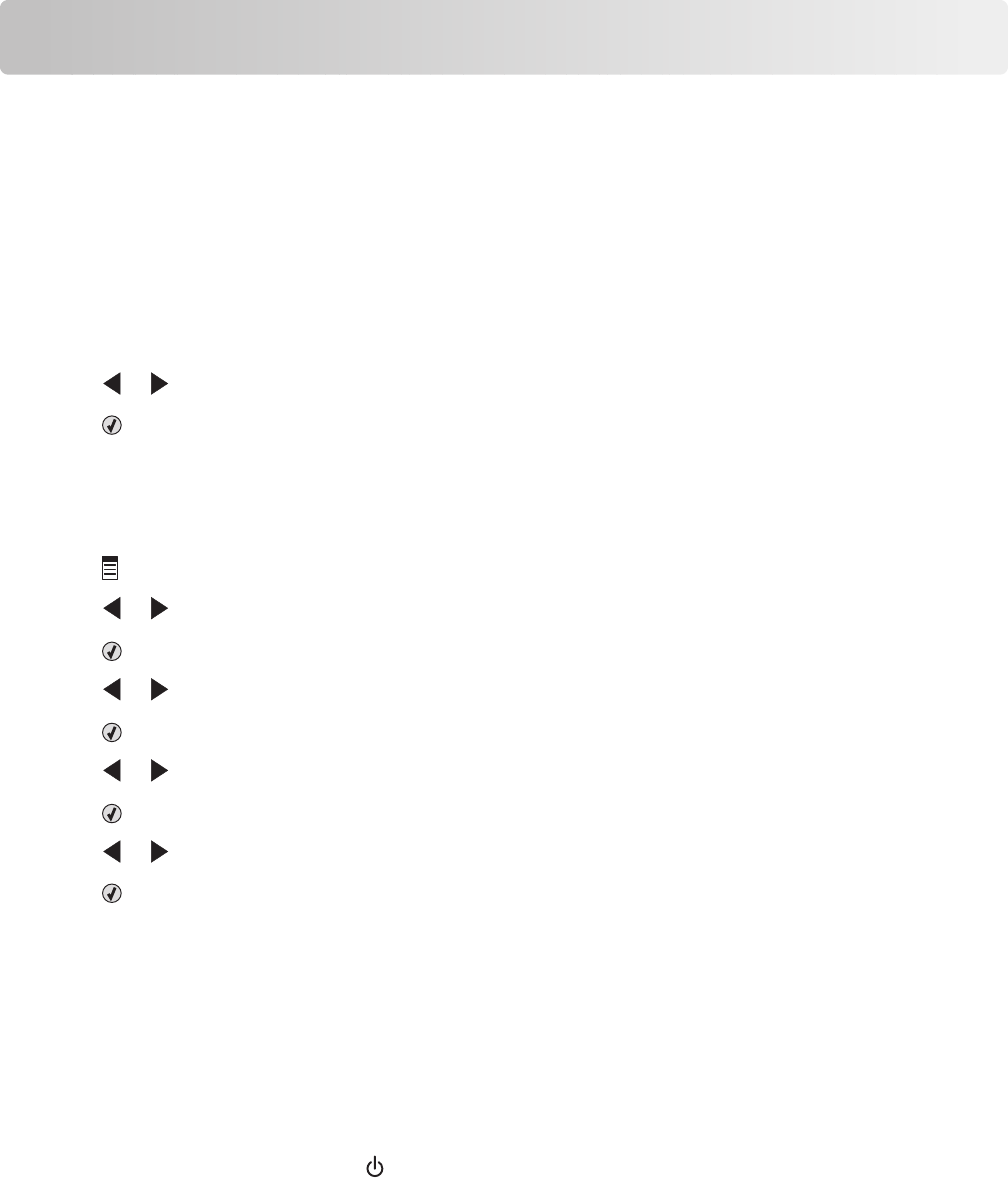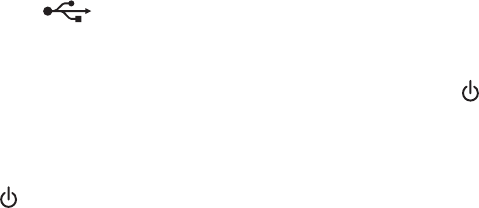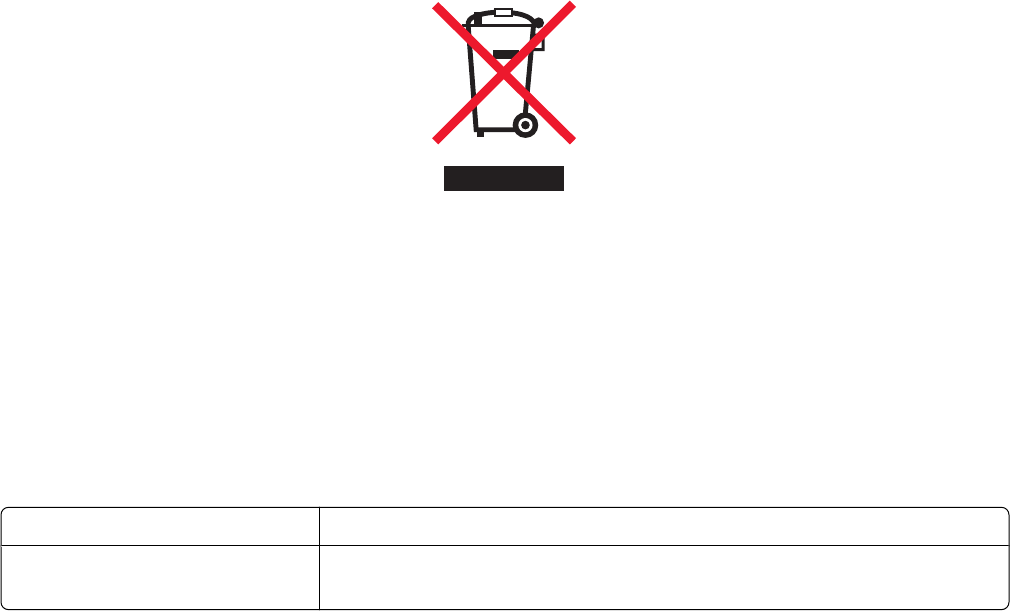6 LIMITATION ON REVERSE ENGINEERING. You may not alter, decrypt, reverse engineer, reverse assemble,
reverse compile or otherwise translate the Software Program, except as and to the extent expressly permitted to
do so by applicable law for the purposes of inter-operability, error correction, and security testing. If you have
such statutory rights, you will notify Lexmark in writing of any intended reverse engineering, reverse assembly,
or reverse compilation. You may not decrypt the Software Program unless necessary for the legitimate Use of the
Software Program.
7 ADDITIONAL SOFTWARE. This License Agreement applies to updates or supplements to the original Software
Program provided by Lexmark unless Lexmark provides other terms along with the update or supplement.
8 LIMITATION OF REMEDIES. To the maximum extent permitted by applicable law, the entire liability of Lexmark,
its suppliers, affiliates, and resellers, and your exclusive remedy shall be as follows: Lexmark will provide the
express limited warranty described above. If Lexmark does not remedy defective media as warranted, you may
terminate your license and your money will be refunded upon the return of all of your copies of the Software
Program.
9 LIMITATION OF LIABILITY. To the maximum extent permitted by applicable law, for any claim arising out of
Lexmark's limited warranty, or for any other claim whatsoever related to the subject matter of this Agreement,
Lexmark's and its suppliers’ liability for all types of damages, regardless of the form of action or basis (including
contract, breach, estoppel, negligence, misrepresentation, or tort), shall be limited to the greater of $5,000 or the
money paid to Lexmark or its Authorized remarketers for the license hereunder for the Software Program that
caused the damages or that is the subject matter of, or is directly related to, the cause of action.
IN NO EVENT WILL LEXMARK, ITS SUPPLIERS, SUBSIDIARIES, OR RESELLERS BE LIABLE FOR ANY SPECIAL,
INCIDENTAL, INDIRECT, EXEMPLARY, PUNITIVE, OR CONSEQUENTIAL DAMAGES (INCLUDING BUT NOT LIMITED
TO LOST PROFITS OR REVENUES, LOST SAVINGS, INTERRUPTION OF USE OR ANY LOSS OF, INACCURACY IN, OR
DAMAGE TO, DATA OR RECORDS, FOR CLAIMS OF THIRD PARTIES, OR DAMAGE TO REAL OR TANGIBLE PROPERTY,
FOR LOSS OF PRIVACY ARISING OUT OR IN ANY WAY RELATED TO THE USE OF OR INABILITY TO USE THE SOFTWARE
PROGRAM, OR OTHERWISE IN CONNECTION WITH ANY PROVISION OF THIS LICENCE AGREEMENT), REGARDLESS
OF THE NATURE OF THE CLAIM, INCLUDING BUT NOT LIMITED TO BREACH OF WARRANTY OR CONTRACT, TORT
(INCLUDING NEGLIGENCE OR STRICT LIABILITY), AND EVEN IF LEXMARK, OR ITS SUPPLIERS, AFFILIATES, OR
REMARKETERS HAVE BEEN ADVISED OF THE POSSIBILITY OF SUCH DAMAGES, OR FOR ANY CLAIM BY YOU BASED
ON A THIRD-PARTY CLAIM, EXCEPT TO THE EXTENT THIS EXCLUSION OF DAMAGES IS DETERMINED LEGALLY
INVALID. THE FOREGOING LIMITATIONS APPLY EVEN IF THE ABOVE-STATED REMEDIES FAIL OF THEIR ESSENTIAL
PURPOSE.
10 TERM. This License Agreement is effective unless terminated or rejected. You may reject or terminate this license
at any time by destroying all copies of the Software Program, together with all modifications, documentation,
and merged portions in any form, or as otherwise described herein. Lexmark may terminate your license upon
notice if you fail to comply with any of the terms of this License Agreement. Upon such termination, you agree
to destroy all copies of the Software Program together with all modifications, documentation, and merged
portions in any form.
11 TAXES. You agree that you are responsible for payment of any taxes including, without limitation, any goods and
services and personal property taxes, resulting from this Agreement or your Use of the Software Program.
12 LIMITATION ON ACTIONS. No action, regardless of form, arising out of this Agreement may be brought by either
party more than two years after the cause of action has arisen, except as provided under applicable law.
13 APPLICABLE LAW. This Agreement is governed by the laws of the Commonwealth of Kentucky, United States
of America. No choice of law rules in any jurisdiction shall apply. The UN Convention on Contracts for the
International Sale of Goods shall not apply.
14 UNITED STATES GOVERNMENT RESTRICTED RIGHTS. The Software Program has been developed entirely at
private expense. Rights of the United States Government to use the Software Program is as set forth in this
Agreement and as restricted in DFARS 252.227-7014 and in similar FAR provisions (or any equivalent agency
regulation or contract clause).
Notices
192























































































